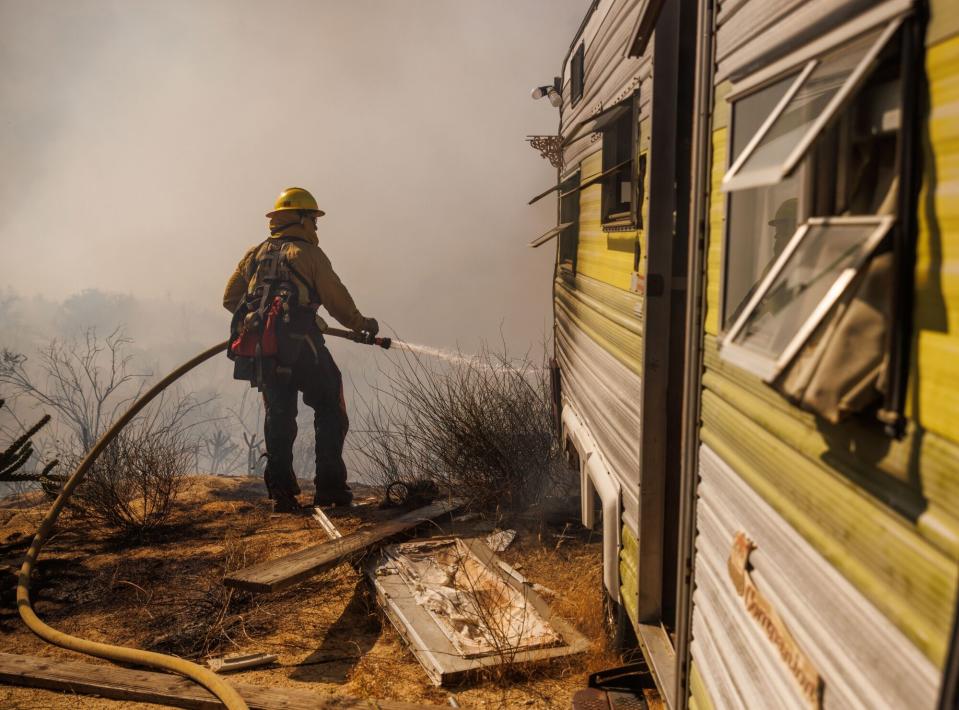California Policyholders May Be On the Hook for Wildfire Losses

(Bloomberg) -- California homeowners could be required to pay a surcharge if the state’s insurer of last resort is unable to cover losses from a catastrophic wildfire.
Most Read from Bloomberg
World's Second Tallest Tower Spurs Debate About Who Needs It
The Plan for the World’s Most Ambitious Skyscraper Renovation
UC Berkeley Gives Transfer Students a Purpose-Built Home on Campus
The California Department of Insurance sent a bulletin to insurance companies this week outlining how the FAIR Plan, which provides coverage to homeowners who can’t find it elsewhere, can pass along costs incurred from “extreme loss scenarios” to consumers.
The state-created insurer is backed by all major companies licensed in California, including State Farm General Insurance Co. and Allstate Corp., which are responsible for paying claims if the plan runs out of funds.
Under new details of a plan first announced in July, insurance companies will be required to cover half the cost of losses of up to $2 billion in total claims — $1 billion for residential and $1 billion for commercial. But the other half can be recouped from consumers through a surcharge if the insurance commissioner gives approval.
The announcement comes as California grapples with a deepening home insurance crisis. Major insurers have been cutting back on coverage, citing growing wildfire risk and state-imposed limits on premium increases. For some, home insurance premiums have skyrocketed, while others haven’t been able to find coverage at all.
More than 419,000 properties are now covered by the FAIR plan, which has grown to become one of the state’s primary insurers. Its risk exposure is nearly $400 billion as of June 30, up 26% in six months.
“While the FAIR Plan hasn’t had a solvency crisis in 30 years, we are taking no chances,” Insurance Commissioner Ricardo Lara said in a statement. “The changes will strengthen the FAIR Plan’s financial reserves and backstops so it can fully and expeditiously pay all future claims from consumers.”
The costs can be passed along to consumers only after the FAIR plan has exhausted all of its reserves, reinsurance and catastrophe bonds, according to the department.
Consumer advocates assailed the plan.
“It’s outrageous and outside the law for the insurance commissioner to force consumers to bail out home insurance companies and then call that consumer protection,” said Carmen Balber, executive director of Consumer Watchdog. “If the FAIR Plan gets into trouble it will be because insurance companies dumped too many Californians onto its books. Those companies should be on the hook for the fallout, not every homeowner in the state.”
In the six months since a Bloomberg Green investigation revealed how California’s insurer of last resort was largely unprepared for the financial toll of a major wildfire, the state has proposed sweeping changes to stabilize the home insurance market and reduce the number of FAIR plan policies.
Under Lara’s proposal, insurers in California will be allowed to increase premiums based on forward-looking climate change data and reinsurance costs. Existing rules require insurance companies to use only historical data and prevent them from basing rates on reinsurance.
Most Read from Bloomberg Businessweek
‘They Have Stolen Our Business’: When You Leave Russia, Putin Sets the Terms
The Average American Eats 42 Pounds of Cheese a Year, and That Number Could Go Up
How Local Governments Got Hooked on One Company’s Janky Software
Howard Lutnick Emerges as Trump’s No. 1 Salesman on Wall Street
©2024 Bloomberg L.P.

 Yahoo Finance
Yahoo Finance 